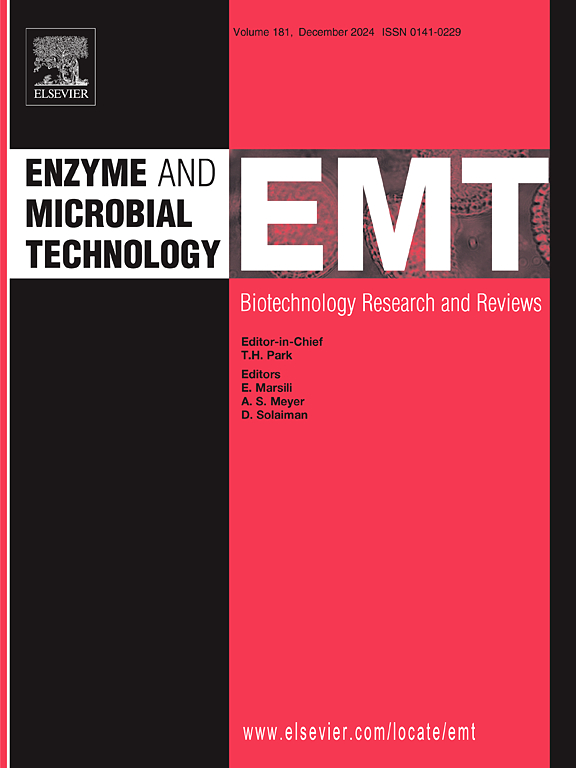Expanding fluorescence imaging tools in Staphylococcus aureus: Optimized expression of red fluorescent proteins
IF 3.7
3区 生物学
Q2 BIOTECHNOLOGY & APPLIED MICROBIOLOGY
引用次数: 0
Abstract
Fluorescent proteins (FPs) are widely used as molecular imaging tools for visualizing protein localization, gene expression, and bacterial labeling. However, most commercially available FPs are optimized for expression in human cells or Escherichia coli, and often exhibit poor expression in other bacterial species due to differences in codon usage preference, which critically affects translation efficiency. Staphylococcus aureus, a clinically important Gram-positive bacterium, presents additional challenges for heterologous protein expression due to codon usage bias and gene regulatory mechanisms. While our previous study has developed expression vectors that enable robust expression of GFP and its color variants in S. aureus, expression of red fluorescent proteins (RFPs) remain limited. In this study, I improved the expression of red fluorescent proteins (RFPs)—mCherry, mOrange2, E2-Crimson—and the photoconvertible protein Dendra2 in S. aureus. Codon optimization was performed based on S. aureus codon usage preferences, and RNA secondary structures at the 5′ region were minimized to enhance translation efficiency. The fully optimized mCherry(Sa2) exhibited strong fluorescence at both colony and single-cell levels. Similarly, mOrange2(Sa), E2-Crimson(Sa), and Dendra2(Sa) showed robust expression following host-adapted codon design, and Dendra2(Sa) retained its photoconvertible functionality. These results demonstrate that codon usage adjustment and RNA structure optimization are effective strategies for achieving high-level expression of diverse fluorescent proteins in S. aureus and provide valuable insights into optimizing heterologous protein expression in non-model bacterial systems.
金黄色葡萄球菌扩展荧光成像工具:红色荧光蛋白的优化表达
荧光蛋白(FPs)被广泛用作可视化蛋白定位、基因表达和细菌标记的分子成像工具。然而,大多数市售的FPs都是针对人类细胞或大肠杆菌的表达进行了优化,并且由于密码子使用偏好的差异,在其他细菌物种中往往表现不佳,这严重影响了翻译效率。金黄色葡萄球菌是临床重要的革兰氏阳性细菌,由于密码子使用偏差和基因调控机制,对异源蛋白表达提出了额外的挑战。虽然我们之前的研究已经开发了能够在金黄色葡萄球菌中鲁棒表达GFP及其颜色变体的表达载体,但红色荧光蛋白(rfp)的表达仍然有限。在本研究中,我提高了金黄色葡萄球菌中红色荧光蛋白(rfp) -mCherry, mOrange2, e2 - crimson和光转化蛋白Dendra2的表达。根据金黄色葡萄球菌密码子的使用偏好进行密码子优化,最小化5′区的RNA二级结构以提高翻译效率。充分优化的mCherry(Sa2)在集落和单细胞水平上均表现出较强的荧光。同样,mOrange2(Sa)、E2-Crimson(Sa)和Dendra2(Sa)在宿主适应密码子设计后表现出稳健的表达,Dendra2(Sa)保留了其光转换功能。这些结果表明,密码子使用调整和RNA结构优化是实现多种荧光蛋白在金黄色葡萄球菌中高水平表达的有效策略,并为优化非模式细菌系统中的外源蛋白表达提供了有价值的见解。
本文章由计算机程序翻译,如有差异,请以英文原文为准。
求助全文
约1分钟内获得全文
求助全文
来源期刊

Enzyme and Microbial Technology
生物-生物工程与应用微生物
CiteScore
7.60
自引率
5.90%
发文量
142
审稿时长
38 days
期刊介绍:
Enzyme and Microbial Technology is an international, peer-reviewed journal publishing original research and reviews, of biotechnological significance and novelty, on basic and applied aspects of the science and technology of processes involving the use of enzymes, micro-organisms, animal cells and plant cells.
We especially encourage submissions on:
Biocatalysis and the use of Directed Evolution in Synthetic Biology and Biotechnology
Biotechnological Production of New Bioactive Molecules, Biomaterials, Biopharmaceuticals, and Biofuels
New Imaging Techniques and Biosensors, especially as applicable to Healthcare and Systems Biology
New Biotechnological Approaches in Genomics, Proteomics and Metabolomics
Metabolic Engineering, Biomolecular Engineering and Nanobiotechnology
Manuscripts which report isolation, purification, immobilization or utilization of organisms or enzymes which are already well-described in the literature are not suitable for publication in EMT, unless their primary purpose is to report significant new findings or approaches which are of broad biotechnological importance. Similarly, manuscripts which report optimization studies on well-established processes are inappropriate. EMT does not accept papers dealing with mathematical modeling unless they report significant, new experimental data.
 求助内容:
求助内容: 应助结果提醒方式:
应助结果提醒方式:


